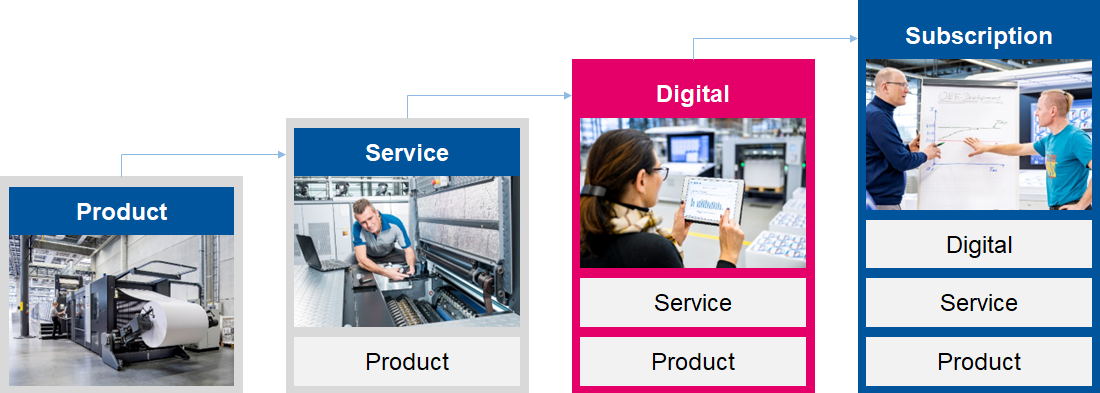Digital Products
Successful Management & Sales of Digital Products
Services already make a significant contribution to customer satisfaction and corporate success in mechanical and plant engineering. In the future, their importance will continue to grow in view of falling margins in the new product business and increasing global competition. In order to differentiate themselves from the competition and ensure their own long-term success, companies must add data-based services to their existing service portfolio and develop them into comprehensive solutions.
The Digital Products group supports companies in the development of digital products in the industrial service portfolio and in pricing and successfully placing them on the market. The focus is on customer benefit: Digital products are specifically geared towards their added value for the customer, which is also the basis for pricing. Data-based approaches also offer considerable potential in maintenance – particularly in the context of predictive maintenance – to optimise processes and avoid unplanned downtime.
The design of industrial services in combination with digital products enables the transformation into a solution provider. This also applies in particular to the integration of digital products into maintenance services and in-house maintenance. It not only contributes to more efficient operation, but can also extend the service life of machines and systems.

Contactperson
Further Information
Further Link:
Whitepaper:
“How resilient is your service and product business“ (Joint Study)


